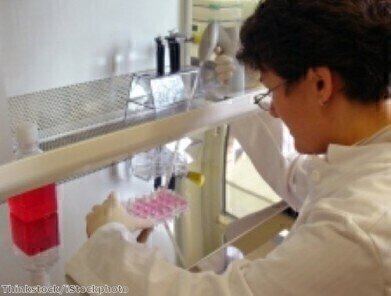-
 The new technique requires around half an hour a week to create stem cells
The new technique requires around half an hour a week to create stem cells
Bioanalytical
Scientists find quick way of creating stem cells
Jan 30 2014
Human stem cells could soon be created in an easier and cheaper way, allowing for the creation of personalised medicine.
Japanese scientists have today (January 30th) announced that they have managed to create stem cells by placing blood cells in an acidic solution for half an hour a week. This triggers something in the adult cell that makes it revert to its embryonic state.
The latest discovery could be developed to such a point that a patient's own cells are able to be used as a repair treatment for damaged tissues, such as those that are present following injury to the heart or brain.
Using the simple weekly process, scientists are able to create embryonic-like cells that are able to develop into a number of different specialised cell types. This means that the cells could be used to treat a variety of different problems quicker than current medical advances allow.
This could lead to samples of a patient's tissue being used to grow stem cells that the body will not reject. The cells will then be able to repair any organs that have suffered damage, whether through external sources or because of disease.
Currently the process has only been used on mouse cells but the scientists are positive that it would also work for cells taken from humans. However, further work will need to be done to test the viability of the process for people.
The type of stem cell that is created through this process - pluripotency - has only previously been created through genetic manipulation of adult cells or by removing them from early embryos.
Both of these processes have been met with opposition, with people raising moral issues concerning the removal of stem cells from embryos - which destroys them - and safety concerns about the use of modified cells. These techniques also come with a high price tag and take a long amount of time.
In contrast, the new discovery could allow laboratories that do not have specialist equipment or knowledge to create the stem cells at a fraction of the cost, opening up the possibility that they can be used as a medical treatment.
The scientists said that they have also been able to create stem cells from muscle, skin, bone marrow, lung tissue, fat, the brain and liver tissues of newborn mice.
Digital Edition
Chromatography Today - Buyers' Guide 2022
October 2023
In This Edition Modern & Practical Applications - Accelerating ADC Development with Mass Spectrometry - Implementing High-Resolution Ion Mobility into Peptide Mapping Workflows Chromatogr...
View all digital editions
Events
Jan 20 2025 Amsterdam, Netherlands
Feb 03 2025 Dubai, UAE
Feb 05 2025 Guangzhou, China
Mar 01 2025 Boston, MA, USA
Mar 04 2025 Berlin, Germany











